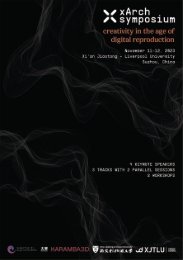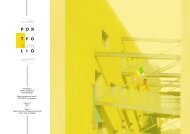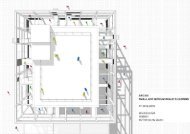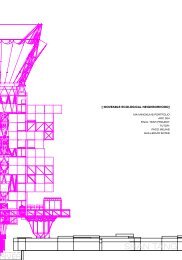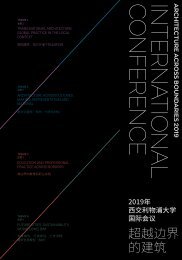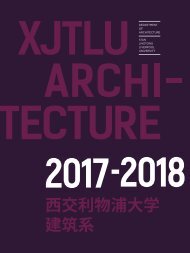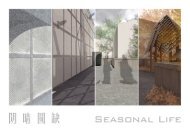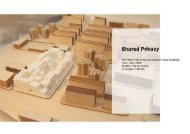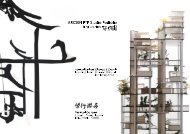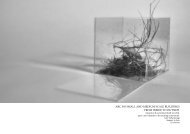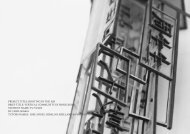YEARBOOK 2018 - 2019 | XJTLU DEPARTMENT OF ARCHITECTURE
The sixth edition of the yearbook of the Department of Architecture at Xi'an Jiaotong-Liverpool University presents student works created during the academic year 2018 - 2019. The yearbook exemplifies the new model for Chinese architectural education for which the department was commended by the Royal Institute of British Architects (RIBA). It is also a showcase of the creative culture that has guided our students towards successful international careers as responsible and creative architectural designers. The Department of Architecture at XJTLU offers RIBA Part 1, 2 and 3.
The sixth edition of the yearbook of the Department of Architecture at Xi'an Jiaotong-Liverpool University presents student works created during the academic year 2018 - 2019. The yearbook exemplifies the new model for Chinese architectural education for which the department was commended by the Royal Institute of British Architects (RIBA). It is also a showcase of the creative culture that has guided our students towards successful international careers as responsible and creative architectural designers. The Department of Architecture at XJTLU offers RIBA Part 1, 2 and 3.
You also want an ePaper? Increase the reach of your titles
YUMPU automatically turns print PDFs into web optimized ePapers that Google loves.
369<br />
370<br />
<strong>2018</strong>-<strong>2019</strong> <strong>YEARBOOK</strong> Xi’an Jiaotong-Liverpool University Department of Architecture 西 交 利 物 浦 大 学 建 筑 系<br />
Individuality of the learning environment in the<br />
Chinese context<br />
● Positioned in Suzhou, both a heritage city (classical<br />
gardens recognised as UNESCO World Heritage<br />
Sites) and an extremely dynamic new city, now the<br />
fourth largest concentration of economic activity in<br />
China in terms of GDP.<br />
● Unique offering of undergraduate and<br />
postgraduate programmes in English in China, taught<br />
by international educators.<br />
● Excellent resources on a new campus, open to the<br />
vibrant life of one of China’s flagship development<br />
projects, the Suzhou Industrial Park (SIP), within<br />
which the University and more than 100 Fortune 500<br />
companies operate, offering a high quality of life.<br />
● Excellent building resources supporting a vibrant<br />
studio culture, with dedicated spaces for design<br />
studios, reviews, and physical modelling, as well as<br />
for a materials library.<br />
● Recruitment of students from amongst the top 5%<br />
of Chinese high school graduates, and a progressive<br />
increase of international students.<br />
Differences between Bachelor and Master<br />
degrees<br />
● BEng programme: provides a clear sequence of<br />
design studios with the gradual introduction of<br />
ideas and skills, with a focus on the attainment of<br />
personal and professional confidence in order to take<br />
advantage of practice experience.<br />
● MArchDes programme: fosters student autonomy<br />
and responsibility in pursuing individual interests<br />
in view of future professional career development<br />
opportunities, with the second year framed as a<br />
“research by design” year.<br />
● MArchDes programme: connection with <strong>XJTLU</strong>’s<br />
Master programmes in Urban Planning and Urban<br />
Design (with the Urban Planning and Design<br />
Department) in year one creates unique possibilities<br />
for interdisciplinary design research.<br />
Relevance to professional practice<br />
● Design studio themes are strongly connected with<br />
real-world problems and necessities in China and<br />
beyond; lecture courses and coursework are related<br />
to contemporary issues and current concerns.<br />
● Practicing architects in Suzhou and Shanghai<br />
contribute as part-time tutors and visiting critics,<br />
and present guest lectures, lead site visits, and offer<br />
internships for students.<br />
● The Design Research Centre which seeks to<br />
actively involve staff, students and local practicing<br />
architects in the development of pilot projects.<br />
● Establishment of the Built Environment Physics<br />
Lab, to offer cutting edge research in the realm of<br />
sustainability.<br />
● Graduates work in top architectural offices,<br />
and assist in strengthening the connections of the<br />
Department to local practice.<br />
Creative criteria delivering course content<br />
● Innovative learning environment that fosters<br />
independent, creative and responsible designers with<br />
a thoughtful, research-led and imaginative approach<br />
to place-making.<br />
● Close collaboration with the two other<br />
Departments of the Built Environment Cluster<br />
(Urban Planning & Design and Civil Engineering),<br />
as well as with the Department of Industrial<br />
Design (with shared facilities in the new Design<br />
Building), developing a culture of teamwork and a<br />
multidisciplinary approach to design.<br />
● Flexible programme design, with the active<br />
participation of a dynamic faculty, delivering<br />
responsive, changing projects that complement and<br />
extend core learning whilst still maintaining criteria<br />
fulfilling content.




